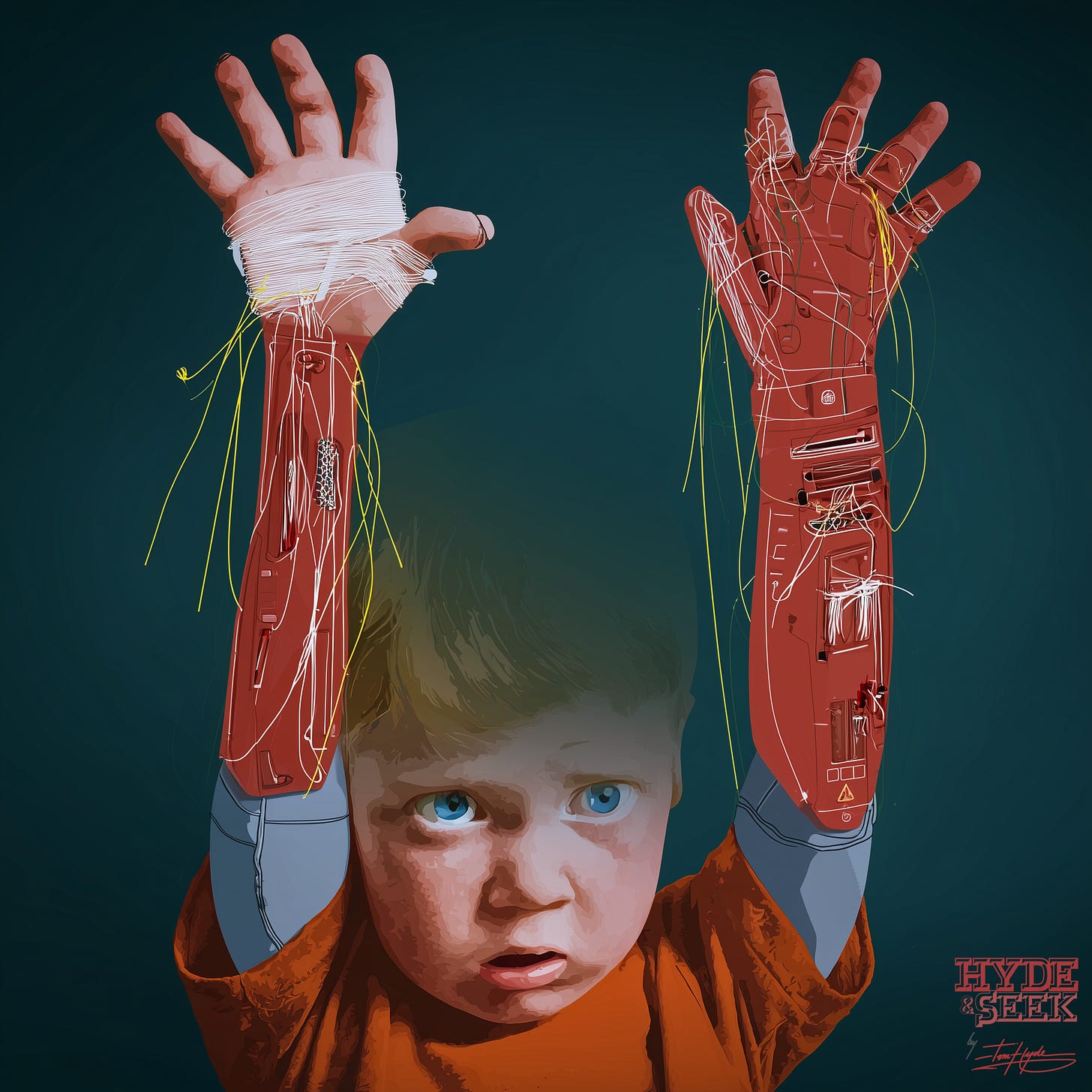Cut Off From Freedom
An overview of prosthetics for pediatrics, and how this injustice remains one of the most underfunded but greatest challenge for modern medical engineering.
From the moment I stumbled across this topic in 2021, I couldn’t get it out of my head. I was researching topics to complete my thesis on for my Masters degree, and the injustice of this particular challenge is what hooked me.
Everyone remembers a period in their childhood where they didn’t quite fit in. That may have been just one class at school, or with a certain group of friends; for some, it’s a thread that ran through their entire childhood.
Children are largely empirical; they don’t possess the full understanding of theoretical concepts to apply any other framework. So if they see something they don’t recognise, there’s a fairly strong likelihood they’ll comment on it. And when there’s a child in your class that has part of a limb missing, you can suggest fairly dependently that’s an observation that is going to attract it’s fair share of comments.
The solution isn’t a new one, but is also one where progress moves at a glacial pace. Prosthetic limbs have been around for a couple of hundred years, since the amputation surgery began to have slightly greater success rates.
However important this engineering challenge is, the reality is that there isn’t a huge total addressable market of amputees to sell the finished devices to either. There’s the full range of devices available on the market - from the most rudimentary claws and grippers through to supports with a matched silicone rubber exterior - and nearly looks indistinguishable from a human limb.
The elephant in the room with prosthetics is the cost - you’re not going to get a basic solution for much less than $10,000. The most refined custom devices can easily cost over $100,000. They have to be extremely durable to withstand the wear, but they can last a few years if looked after properly.
This is a challenge for an adult, but it’s a roadblock for a child. Irrespective of the device chosen, a child will outgrow their prosthetic often in a matter of months. This leaves their parents frantically scrabbling to find the funds to pay for a new prosthetic. A child will require many prosthetics throughout their lives; and therefore this isn’t a singular problem - it’s a perpetual one for both the child, their parents and anyone else who attempts to help out with the costs.
The other elephant in the room is the limb itself. There’s around twice as lower limb (i.e leg) prosthetics in use as there are upper. The leg only really has to contend with a singular type of motion, often in a limited number of planes; the typical walking gait for a biped like a human. Compare that to an arm or a hand - which can move in effectively infinite planes of direction, with variable force, magnitude, sensitivity and tact. Legs are also much bigger limbs - so that’s alot more space to house componentry. Arms are typically only a fraction of the size in comparison; are are even smaller in pediatric subjects. Leg prosthetics can be expensive; but the costs of advanced arm and hand prosthetics are astronomical.
Then there’s the fitting. A prosthetic can be required for a number of reasons, but most is following amputation surgery. The remaining tissue (technically referred to as the ‘stump’) is often extremely sensitive and painful, as it’s largely made up of scar tissue following the surgery. This is the main connection for the prosthetic to the patient - and has to be secure, incorporates infection controls, but doesn’t induce so much pressure to cause chronic pain within the scar tissue. Too much pressure causes a build up of fluid in the stump - sweating, swelling and water retention alter the fitment, potentially causing the prosthetic to no longer fit. The stump is commonly prone to infection - and children are not renowned for exemplary hygiene and sanitary management of themselves.
Even if the design is refined well, and the money is available to purchase it; the manufacturing and fitment is a long and arduous process, often taking up to 18 months. As you can predict in the case of the child, they have likely outgrown their fitment in nearly all cases with these timescales. Prosthetists are not a common medical specialism either, and waiting lists can be lengthy.
The final nail in all of this, which is halting many of the development is the regulatory procedures. Testing new device designs on adults is difficult from a regulatory standpoint, but at least they can eventually complete a disclaimer to give their consent to the experimentation in pursuit of furthering the cause. For children, that responsibility lies with their parents, and there’s an additional layer of regulation which halts progress.
So the challenge for pediatric prosthetics:
Produce something quickly and cheaply - ideally as quickly as possible, for the least amount of cost.
Enable all (or at least as many) of the original limb’s functionality and ranges of motion.
Keep weight to a minimum, with a secure fitment to the patient.
A simplistic design which can be repaired or adapted quickly and easily, with minimal componentry to minimise the constraint effects of the space.
A design that promotes the best hygiene and sanitary properties to minimise infection control.
Further posts will outline the most promising solutions, and the following research and development I’ve chosen to continue with to help contribute to this critical field.
TH



